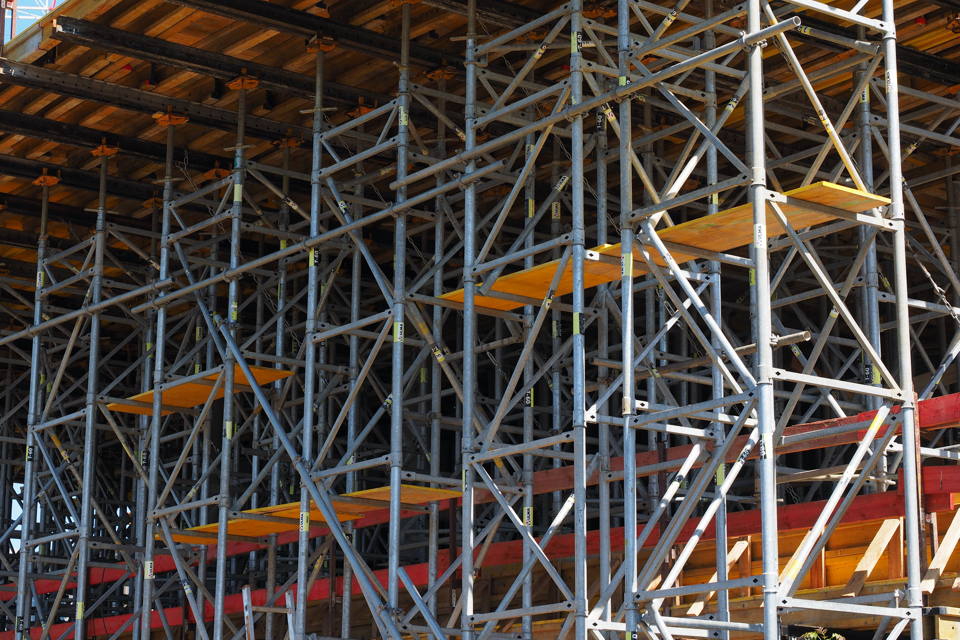Erecting scaffolding while the vessel is at sea can be dangerous as weather conditions can change rapidly. In a recent Mars Report, substandard practices onboard a general cargo vessel resulted in two injured crew members after scaffolding came crashing down.
The Mars Reports are compiled (anonymously) by The Nautical Institute. A summary of what happened:
Scaffolding had been erected on top of hatch cover four of a general cargo vessel to allow two crew members to paint the crane jib while the vessel was underway. Seas were slight with no swell. A permit to work had been issued and the generic risk assessment was considered. Both crew members were wearing personal protective equipment (PPE) and safety harnesses.
After they had completed painting the accessible parts of the jib, the two crew loosened the top securing rope, removed their safety harnesses and started descending the scaffolding from opposite sides.
As they were climbing down, the ship suddenly began rolling and the scaffolding tipped over, collapsing on the hatch cover and taking the two crew members with it.
The two victims were badly injured, and the vessel had to urgently deviate to evacuate them. One of them had to undergo surgery and both were subsequently repatriated under medical escort for further treatment in their home country.
Investigation findings
The company investigation revealed that the accident occurred as a result of several substandard practices and conditions on board including:
- Inadequate work planning/preparation. Not all of the risks associated with the assigned work had been considered, in particular the rapidity with which sea conditions can change, making scaffold work dangerous.
- Failure to ensure that the scaffolding was properly secured while the two crew members were descending. The top securing rope was loosened, making the scaffolding unstable while crew members were still on the scaffolding.
- Safety harnesses were not used while the two crew were descending the scaffolding.
- The two victims attempted to descend simultaneously. This may have made the scaffolding even more unstable if it was not done in a synchronised way.
‘Risk assessments should be task-specific’
Advice from The Nautical Institute to prevent such accidents from happening:
- Fall protection should be used in cases where a crew member is at risk of falling two metres or more. An approved safety harness including a fall arrestor, an inertia reel or a safety line should always be used, even when crew are ascending or descending, and should be connected to a strong point on the ship structure.
- Scaffolding, when used, should be adequately secured from all sides and especially from the top.
- Generic risk assessments are often insufficient for many situations; they should always be task-specific.
Mars Reports
This accident was covered in the Mars Reports, originally published as Mars 201974, that are part of Report Number 325. A selection of this Report has also been published in SWZ|Maritime’s December issue. The Nautical Institute compiles these reports (anonymously) to help prevent maritime accidents. That is why they are also published on SWZ|Maritime’s website.
More reports are needed to keep the scheme interesting and informative. All reports are read only by the Mars coordinator and are treated in the strictest confidence. To submit a report, please use the Mars report form.








